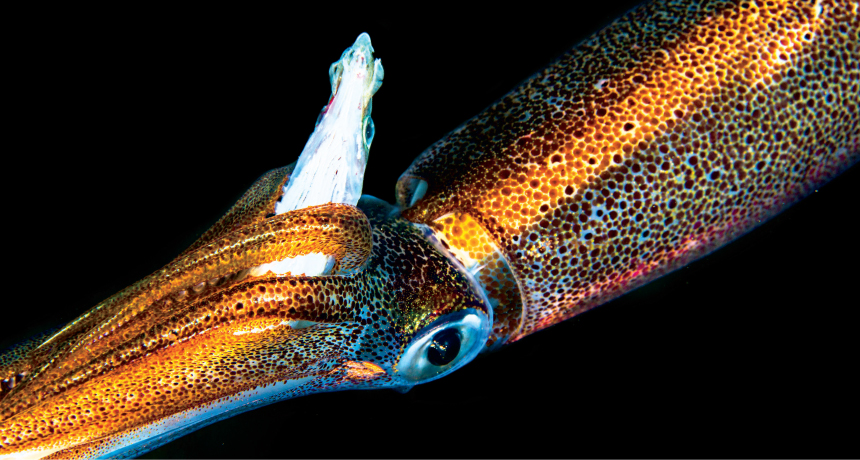The colorful lives of squid
Squids, octopuses and cuttlefishes are nature’s iPads

SURFACE TRICKS California market squid (shown) can shimmer, speckle or black out completely in a wide range of special effects. What these displays look like to other squid remains a puzzle.
Damian Davalos/Flickr